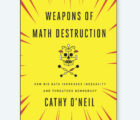Several years ago, my wife and I were discussing organizing and concentrating skills with our friend Jane, who worked with school children with learning, organizing or focusing difficulties. Jane mentioned the need for many of them to physically separate themselves from distractions to enhance their focus while doing homework. Having a special place to do homework, separate from other activities, worked for some of them. When I mentioned my difficulties organizing my work papers, Jane suggested that I separate my “active work” papers from my “records, reference and other” papers.
I thought it was a great idea and started separating my storage items from my work items. I still have a sheet of paper next to my desk that says: “This is your workspace, NOT your storage space.” I have maintained that distinction since then.
That simple separation of work from storage helped get those tasks that I was not currently working on out of sight and out of mind. This helped me concentrate on active projects.
But my workspace still had piles of each of my active projects, and over time, the number of those piles increased. Some projects take many months to complete; those project stacks tend to be higher than the tasks that take only a few days. I had solved the storage issue but was left with a projects-I-am-working-on issue. Those piles were at least as distracting as the storage piles I had moved to another location.
Some organization experts say, “Put your stuff in drawers after making a list of the things you have to do.” I tried that several times with limited success — the piles reappeared. I would make a to-do list, but still I had the piles.
I found help in the book Organizing for the Creative Person.[1] The authors describe “Ryan,” who organized paper much like I had been doing — in piles. “People who love the printed word tend to surround themselves with it. They depend on reading material, remember it, think about what they’ve read, and feel a relationship to it. And soon they have piles of paper in every available space.” (I believe this is why books may never be replaced by electronic media — some of us like to see those books on our bookshelves, like finding friends at a party. When I read the book title on my bookshelf, it reminds me of what I learned by reading the book.)
The authors’ description of the fictional Ryan struck a chord with me: “Ryan likes to be able to see every reminder of things he needs to do … he feels that if a task is in view, he will remember to do it. To him, the saying ‘seeing is believing’ translates into ‘seeing is remembering.’ Being able to see what he needs to do gives him a feeling of control. [He is] … reluctant to file papers away out of sight because of a fear of not being able to find them again.”
After reading that, I understood why I sometimes would get away from my office to read or write: to avoid distractions. Usually, the piles are not a problem, but occasionally they would get to me. Pre-COVID one of my favorite places was the work cafeteria during off-hours. At home I like to work on the deck — where I am while writing this. The deck offers no distractions save for an occasional rabbit or squirrel. And if I am reading from paper or writing in longhand, I am not tempted to check the news or stocks on my PC because it is not with me.
My solution was to put the projects-I-am-working-on piles in a place that I cannot see from my desk. Once found, I placed all the to-do piles on it. Archives, reference and other not-working-on-currently files are still in file folders, which, for some reason, works for me.
Could too many distractions be why some school children have a hard time doing homework at home? In lockdown, their options for places with minimal distractions are limited.
If you try this, let me know if it works for you.
[1] Dorothy Lehmkuhl & Dolores Cotter Lamping, Organizing for the Creative Person: Right-Brain Styles for Conquering Clutter, Mastering Time, and Reaching Your Goals, Harmony, 1993.











